
Damiano Tommasi is an Italian footballer who played as a defensive midfielder, and is the current president of the Italian Footballers' Association.

The subclass Euechinoidea includes almost all living species of sea urchin, and fossil forms going back as far as the Triassic.

The Aspidodiadematidae are a family of sea urchins.

Astropyga radiata, the red urchin, fire urchin, false fire urchin or blue-spotted urchin, is a species of sea urchin in the family Diadematidae. It is a large species with long spines and is found in the tropical Indo-Pacific region. It was first described in 1778 by the German naturalist Nathaniel Gottfried Leske.
The World Register of Marine Species (WoRMS) is a taxonomic database that aims to provide an authoritative and comprehensive list of names of marine organisms.
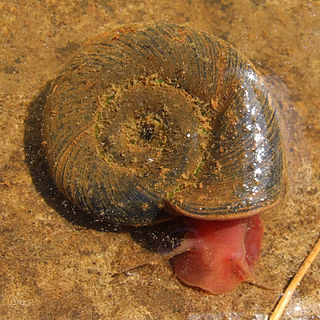
Planorbarius is a genus of air-breathing freshwater snails, aquatic pulmonate gastropod mollusks in the family Planorbidae, the ram's horn snails, or planorbids, which all have sinistral or left-coiling shells.

The Echinacea are a superorder of sea urchins. They are distinguished by the presence of a rigid test, with ten buccal plates around the mouth, and solid spines. Unlike some other sea urchins, they also possess gills. The group is a large one, with species found worldwide.

The Camarodonta are an order of globular sea urchins in the class Echinoidea. The fossil record shows that camarodonts have been in existence since the Lower Cretaceous.
Odostomella is a genus of sea snails, marine gastropod mollusks in the family Pyramidellidae, the pyrams and their allies.
Abatus curvidens is a species of sea urchin of the family Schizasteridae. Their armour is covered with spines. It came from the genus Abatus and lives in the sea. Abatus curvidens was first scientifically described in 1836 by Ole Mortensen.
Abatus elongatus is a species of sea urchin of the family Schizasteridae. Their armour is covered with spines. It came from the genus Abatus and lives in the sea. Abatus elongatus was first scientifically described in 1836 by Koehler.
Abatus shackletoni is a species of sea urchin of the family Schizasteridae. Their armour is covered with spines. It came from the genus Abatus and lives in the sea. Abatus shackletoni was first scientifically described in 1911 by Koehler.

Agassizia scrobiculata is a species of sea urchin of the family Prenasteridae.

Echinometra is a genus of sea urchins in the family Echinometridae.
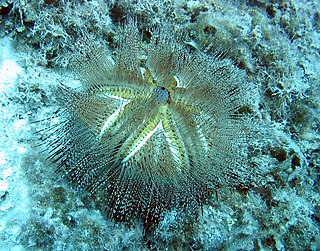
Astropyga is a genus of sea urchins of the family Diadematidae. Their armour is covered with spines. Astropyga was first scientifically described in 1855 by John Edward Gray.

Dorippe frascone, the urchin crab or carrier crab, is a small species of crab in the family Dorippidae that was first described scientifically by J.F.W. Herbst, in 1785. It is found in the Red Sea and parts of the western and eastern Indian Ocean. It often has a symbiotic relationship with a long-spined sea urchin and carries one around on its carapace.
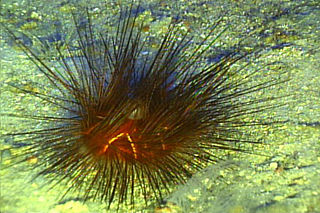
Astropyga magnifica is a species of sea urchins of the family Diadematidae. Their armour is covered with spines. Astropyga magnifica was first scientifically described in 1934 by Austin Hobart Clark.
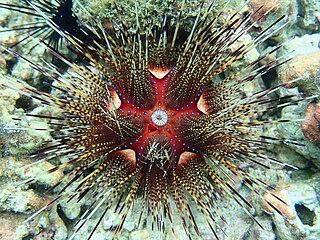
Astropyga pulvinata is a species of sea urchins of the family Diadematidae. Their armour is covered with spines. Astropyga pulvinata was first scientifically described in 1816 by Jean-Baptiste de Lamarck.

Strongylocentrotus fragilis is a species of sea urchin of the family Strongylocentrotidae.
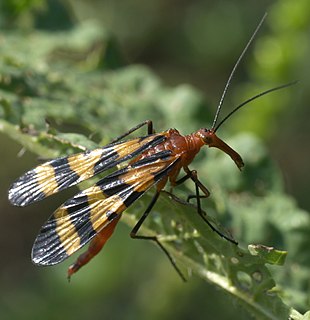
Panorpa nuptialis is a species of common scorpionfly in the family Panorpidae. It is found in North America.
















